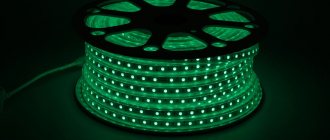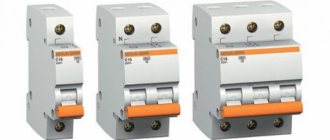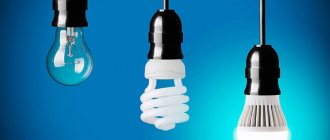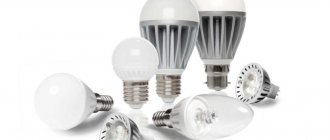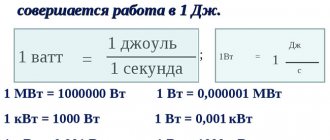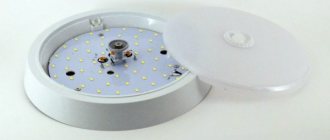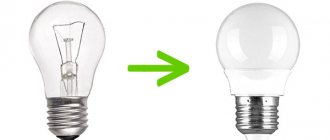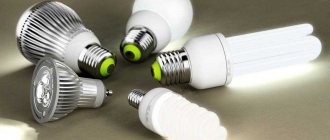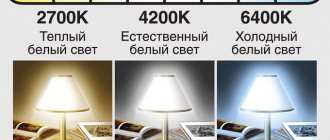Author: Forrest Gump
01 December 2015 20:17
Tags: LED lamp tests
42077
2
Most of the LED lamps that I test and write about can only be purchased in specialized online stores, but ordinary buyers usually buy lamps in hypermarkets. I went to Auchan and Leroy Merlin stores, bought 48 models of LED lamps there and tested them. I returned the lamps back to the stores, as they have a return option. Today - 22 lamps from Auchan.
0
Wolta.
Two lamps tested. Wolta has two series of lamps - regular in orange boxes and simple in white. All the orange ones I tested were good. Many whites have unacceptable levels of light pulsation. So, a 5.5-watt ball lamp has practically no ripple, while a GU5.3 spot has as much as 66%. This lamp cannot be used. As for the ball, the only complaint about it is 81% of the declared luminous flux. It shines like a 45-watt incandescent lamp, and the manufacturer claims the equivalent of 50 watts.
How does an LED lamp work?
The operating principle of LED lamps is not much different from incandescent lamps. In an LED lamp, many small LEDs and a yellow luminescent layer create the effect of incandescent filaments with almost omnidirectional radiation. Due to their low power consumption, there may be a misconception that LED lamps do not emit heat. In fact, LEDs convert more than 70% of their power consumption into heat, which is significantly less than incandescent bulbs.
Because LEDs use less power, you can touch the dome of most light bulbs when they are on, but the base temperature can reach 85°. After all, most of the heat generated by electronic components is dissipated through the heatsink and housing into the environment.
Space.
Four lamps tested. First of all, “Cosmos” misleads the consumer with its equivalent. On a 5-watt candle, the equivalent of 60 W is written in large letters, and in very small letters, 340 Lm, but this is not a 60 W equivalent, but only 40. In fact, this is not even the case - the lamp gives only 242 Lm and shines like a 30-watt incandescent lamp . It’s the same with other lamps - a 7 W bulb has an actual power of 5 W, gives 422 lm instead of the promised 540, and shines like a 50-watt incandescent lamp, but not at all like a 75-watt one. A 5-watt spot consumes only 3.5 W, produces 226 lumens instead of the promised 370, and shines like a 40-watt halogen spot, not like a 50-watt one. The 3-watt R39 mirror lamp produces 199 lumens instead of the promised 240, but here the manufacturer made a mistake with the equivalent in the other direction. The fact is that mirror bulbs provide much less light than regular bulbs. A 30-watt R39 incandescent mirror bulb produces only 160 lumens, so 199 lumens is the equivalent of 35 watts. All lamps have good CRI values of 82.3-83.1. The light pulsation of the first three lamps does not exceed 31%, but the R39 lamp has a pulsation of 47% and it is already visible, so I am forced to reject this lamp.
⇡#Bulb lamps with E27 socket
Let's start with the good. All lamps have no pulsation; All but one use IC drivers, and the lamps can be operated at reduced voltage without reducing brightness, and the brightness of the lamps does not change when voltage fluctuates. The minimum voltage at which the lamp can operate and produce at least 90% of the rated luminous flux is given for each lamp in the “Min. eg."
Each manufacturer interprets the power equivalent in its own way (for example, for Lexman 806 lm is 60 W, and for Philips 650 lm is 65 W). OSRAM generally indicates different correspondence to the equivalent luminous flux for different lamps: the matte “pear” 6.8 W indicates 600 lm - the equivalent of 60 W, and the filament “pear” 7 W indicates 806 lm with the same equivalent! This is why I recommend not paying attention to the indicated power equivalent, but looking only at the luminous flux. The power equivalent can be approximately calculated by dividing the luminous flux by ten: 400 lm - 40 W, 600 lm - 60 W, 750 lm - 75 W, 1000 lm - 100 W.
It is also not worth comparing lamps in terms of power consumption - with the same power, they can produce different amounts of light (this depends on the technology and type of LEDs used).
Unfortunately, not all manufacturers honestly indicate lamp parameters on the packaging. This is clearly visible in the table: for OSRAM, Lexman, Philips, the actual parameters are often even better than those indicated, and Uniel (including under the separate brand “Bright Lamp”), Wolta, IEK, Elektrostandard indicate power, luminous flux and equivalent higher than actual.
It comes to the point that the parameters are sometimes inflated by a third: for example, on one of the “Bright Lamp” (Uniel) lamps the power is indicated as 12 W, the luminous flux is 1000 lm and the equivalent is 100 W. In fact, it consumes 9.3 watts, produces only 753 lumens and is as bright as a 75 watt incandescent bulb.
At the same time, the cheaper Lexman lamp, with a specified 11 W, 1055 lm and 75 W equivalent, actually consumes 10.8 W, produces a flux of as much as 1136 lm and shines like a 100-watt incandescent lamp.
Leroy Merlin sells only two Philips lamps from the economy series with a low CRI, which is listed on the website, but not indicated on the packaging of the lamps themselves. That being said, Philips has many good lamps that are sold in other stores.
For some reason, OSRAM bulb lamps are sold exclusively with warm light 2700 K and very cold light 6500 K. The latter are not at all suitable for residential premises.
I was unpleasantly surprised by the Uniel filament lamp. Not only did its actual power amount to 7.1 W instead of the promised 10 W, and the luminous flux was 762 lm instead of the promised 920 lm, it turned out to have a low color rendering index of 74 (on the box it says “more than 80”), and this is the first filament a lamp with a low CRI despite the fact that I have already tested several hundred of them.
The bottom line on E27 bulbs: you can safely buy Lexman (everything is fair, everything is good and a 5-year warranty), OSRAM with warm light (everything is fair, everything is good, but the warranty is 2 years and the price is higher). It is quite possible to buy lamps from the Bright Lamp brand, realizing that their actual power and brightness are lower than promised.
The best buy in the category is Lexman 11 W for 83/94 rubles: 1136/1215 lm, equivalent to 100 W, five years warranty.
Ball lamps 45 mm with E27 and E14
All lamps do not pulsate, which is good. All non-filament lamps are equipped with an IC driver and can operate at significantly reduced voltage.
Lexman and OSRAM are still at their best - actual parameters are in most cases better than stated, color rendering indices are above 80.
Uniel, Wolta and IEK, as I wrote above, indicate inflated parameters on the packaging.
The champion in lies is the Wolta “ball” with an E14 base. Indicated: 6 W, 560 lm, replacement 6 W, CRI Ra greater than 80. Measurement results: 4.7 W, 412 lm, replacement 45 W, CRI 73. The luminous flux is overestimated by 36%, and, which is very unpleasant, low CRI with the stated high level, which is impossible to check without special (and very expensive) instruments.
Previously, Wolta had two series of lamps - “Wolta” in beautiful orange boxes, with a CRI above 80, and “Wolta Simple” in white boxes, with a CRI above 70. Now both of them have a low CRI, while the inscription about Ra is higher 80 left on the boxes.
The most expensive lamp in the category is a matte filament “ball” from Osram with the ability to adjust brightness (dimming) for 298 rubles. The dimmable driver did not fit in the E14 socket, so the lamp is larger than others.
You can safely buy Lexman and OSRAM balls at Leroy.
Best buys in this category:
- Lexman 5.5 W E27 for 65 rubles: 535/582 lm, 60 W replacement, CRI 85, five years warranty.
- Lexman 5.5 W E14 for 115 rubles: 485/520 lm, replacement 55 W, CRI 85, five years warranty.
- Lexman 8 W E27 for 120 rubles: 808/842 lm, replacement 80 W, CRI 85, five years warranty.
- Lexman 8 W E14 for 136/148 rubles: 805/862 lm, replacement 80 W, CRI 85, five years warranty.
- Lexman filament 4 W E27 for 135 rubles: 434/463 lm, replacement 50-55 W, CRI 82-83, five years warranty.
- Lexman filament 4 W E14 transparent for 135 rubles: 429/489 lm, replacement 50-55W, CRI 83, five years warranty.
- Lexman filament 4 W E14 matte for 142 RUR: 398/467 lm, replacement 45-50 W, CRI 81-82, five years warranty.
Era.
Two lamps tested. Both lamps have no light pulsation, CRI 85.7 and 82.5. The luminous flux of the pear lamp is 86% of the declared one, the equivalent of 65 W (promised 70 W), but the luminous flux of the R63 DSLR is only 66% of the declared one, but this is most likely a manufacturer’s error with the luminous flux and the equivalent of DSLRs. The tested lamp shines like a 70-watt DSLR (the equivalent of 75 W is declared). Nice light bulbs. When purchasing, you just need to mentally subtract 5-10 W from the promised equivalent.
Total: what to buy?
Obviously, foreign brands OSRAM and Philips hold the mark. But the domestic ERGOLUX and Navigator were almost as good as them in our test, and they cost significantly less. Of course, the issue of resource remains open, but even if these lamps last less, the savings will still be noticeable.
This is interesting:
- How to fix an LED light bulb yourself: step-by-step instructions
Essential LED Terms
| Radiation angle (degrees) | The area in which the lamp reaches at least 50% luminous intensity (in candelas). |
| Efficiency (lumens per watt) | Modern high-quality LED lamps reach values above 75 lm/W |
| Color temperature (in Kelvin) | LEDs up to 3300K glow with warm white light (similar to incandescent lamps), up to 5000K - neutral white, starting from 5000K - cool white light. |
| Color rendering index (CRI) | Shows how closely the body color in the light emitted by the lamp corresponds to natural light. Incandescent lamps reach an index value of almost 100 units, modern LED lamps often reach values from 80 to 95. |
| Power consumption (in Watts) | Unlike incandescent lamps, the power of LED lamps does not measure brightness, but only energy consumption. |
| Luminous intensity (in candelas) | The brightness of a light source in a certain direction (spatial angle). |
| Luminous flux (lumens) | Overall lamp brightness. Daylight brightness, depending on conditions, ranges from 250 lm (approx. 25 W) to 1100 lm (approx. 75 W). |
Design and characteristics
While studying semiconductor materials, Russian scientist Oleg Losev in 1923 discovered the phenomenon of luminescence in silicon carbide, later called electroluminescence. Since then, research began into the nature of the origin of this light. So, in 1951, a research institute was created in the USA, dedicated to the invention of lamps, the work of which was based on the open effect.
The first lamp was introduced in 1968, it was installed in a Monsanto indicator. The set, consisting of several dozen red illuminators, was used by Hewlett-Packard, which released an advertising LED screen for advertising. In 1976, yellow-green and red-orange diodes appeared, but they could not be used as a full-fledged lighting source, since scientists were unable to obtain blue light and, accordingly, create uniform illumination.
In 1991, Japanese physicist Sh. Nakamura, using a heterostructure based on indium gallium nitride, obtained a blue glow. Using three colors - blue, green and red - it was possible to achieve any shade. But it was only six years later that a truly white LED was released. Since 1999, the widespread use of LED lamps began as an economical and reliable source of lighting.
Principle of operation
LED is a semiconductor. When an electric current passes through it, it produces radiation in the visible light spectrum. Physically, it is a crystal in which a pn junction is created. When it is turned on in forward bias, when the plus of the power supply is applied to the hole zone (p), and the minus to the electron zone (n), a movement of charges occurs, which meet each other at the border of the contact zone.
When they collide, a process of recombination (mutual destruction) occurs with the release of energy. This energy forms the light perceived by the human eye. Not all semiconductors can emit in the visible spectrum. Direct-gap semiconductors are considered the best emitters. These include GaAs, InP, ZnSe, CdTe. The light bulb itself consists of several parts, which include:
- Diffuser. Used to create uniform illumination of a large area.
- Primary radiator. A heat-conducting plate in direct contact with the diode emitter.
- Main radiator. Serves to remove heat from both the diode crystal and the electronic board.
- Driver. An electronic circuit that converts the 220 volt network voltage to that required for the operation of the emitter.
- Base. Available in different sizes and designed to create reliable electrical contact.
You might be interested in this Features of metal halide lamps
The electronic circuit (driver) works on the principle of frequency and voltage conversion. In addition, its main task is to maintain a given current value, while the voltage can vary.
The amount of current depends on the brightness of the LEDs, so the driver must have a power reserve of 25-30%, otherwise the current passing through it will lead to overheating of its components and failure. When reviewing and comparing LED lamps, a lot of attention is paid to the quality of this electronic module.
Marking
The marking of LED lamps is exactly what you need to be guided by when choosing. They differ according to the type of flask, where there are “A”, “G”, “B and C”, “R”. The first is pear-shaped, reminiscent of standard flasks. The second type is spherical, the third is a candle, an elongated shape, and the last one is “mushroom”, also called reflex.
They also differ in the diameter of the base:
— E 27 and 14 are the most common among users and have a screw connection type. Their price depends on the quality, as well as the pulsation coefficient of LED lamps;
— GU 10 – relevant in suspended ceilings, has a two-pin connector;
— GU 5.3 – used in spotlights. Has a low luminous flux;
— GU13 – suitable for lighting large surfaces in linear or direct luminaires.
Such instructions will help you choose the right type of lamp and install it without problems. In this case, it is important to know the brands that can please you with quality products. Most of the options not presented in specialized online stores are of poor quality production, that is, the lamps burn out quite quickly.
Review of manufacturers
Many manufacturers around the world are engaged in the production of LED lamps. The bulk are companies from China and Europe. Chinese companies are divided into “semi-basement” and certified. The products of the former should not be considered for purchase, as their use may even be dangerous.
These lamps are assembled from cheap components, and their operation does not meet any standards. The glow of such devices is accompanied by an unpleasant odor and irritating light.
Certified light bulbs undergo quality control and mandatory certification. It is worth noting that many manufacturers are moving their production facilities to China. This is done to reduce the cost of the production process, while the quality of the product remains unchanged. Popular brands include:
- Feron. A Chinese brand distinguished by the variety of appearance of its lamps and their resistance to atmospheric changes.
- Camelion. The products are popular in European countries due to the reliability of the power supplies used in LED emitters.
- Jazzway. A recognized company in the Russian lighting market. During its existence, more than 30 million lamps were produced.
- Gauss. The service life of this brand's products is about 20 years, which is ensured by an automated quality control regime.
- Maxus. The lamps are exceptionally resistant to mechanical damage due to the absence of glass in the bulbs.
- BBK. A Chinese brand that has developed a driver that eliminates ripple and protects the emitter from overheating and voltage surges over a wide range.
- ASD. The company's products are aimed at the Russian sales market. This name is associated with low energy consumption, long service life and safety.
- Osram. A high-tech company from Germany, which is the world's largest manufacturer of LED lamps. Winner of awards for high quality products and innovative developments.
- Philips. The products of the Dutch company are manufactured in China. It is considered a middle peasant among manufacturers with affordable prices.
- Eurolamp. It features a wide range of LED lamps with a well-thought-out cooling system. The German company produces products that meet European standards and are distinguished by affordable prices.
You may be interested in Features of illumination measurement
